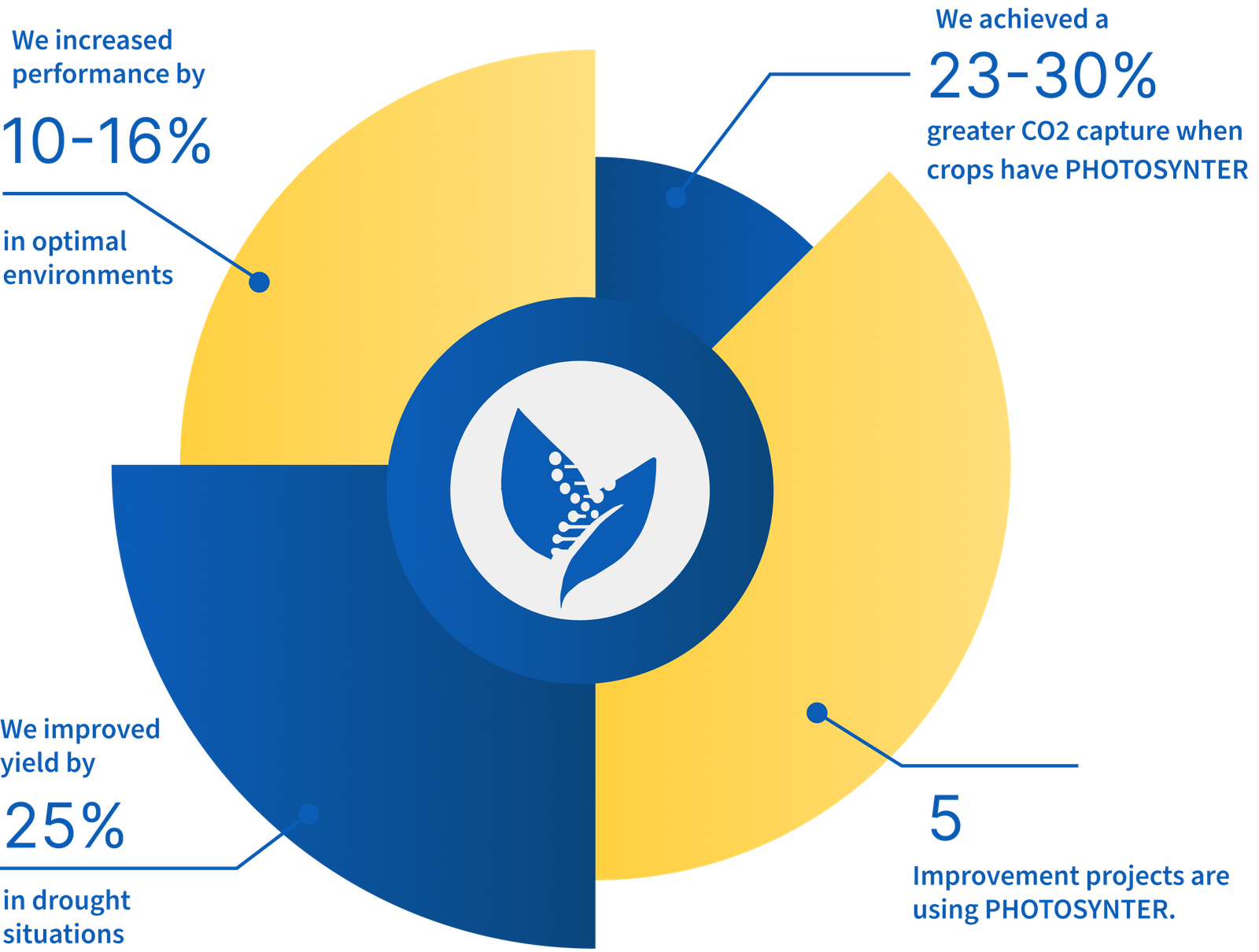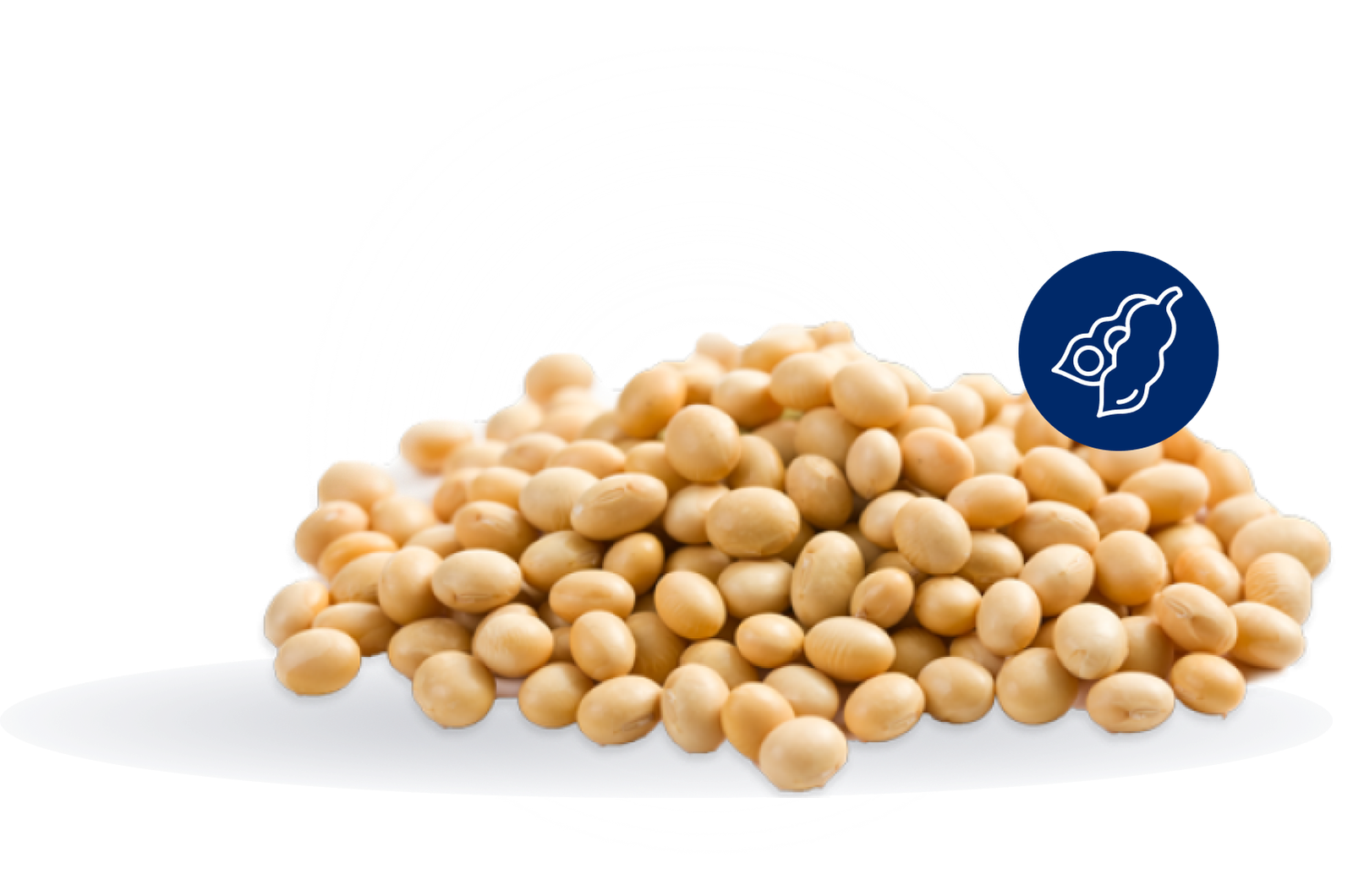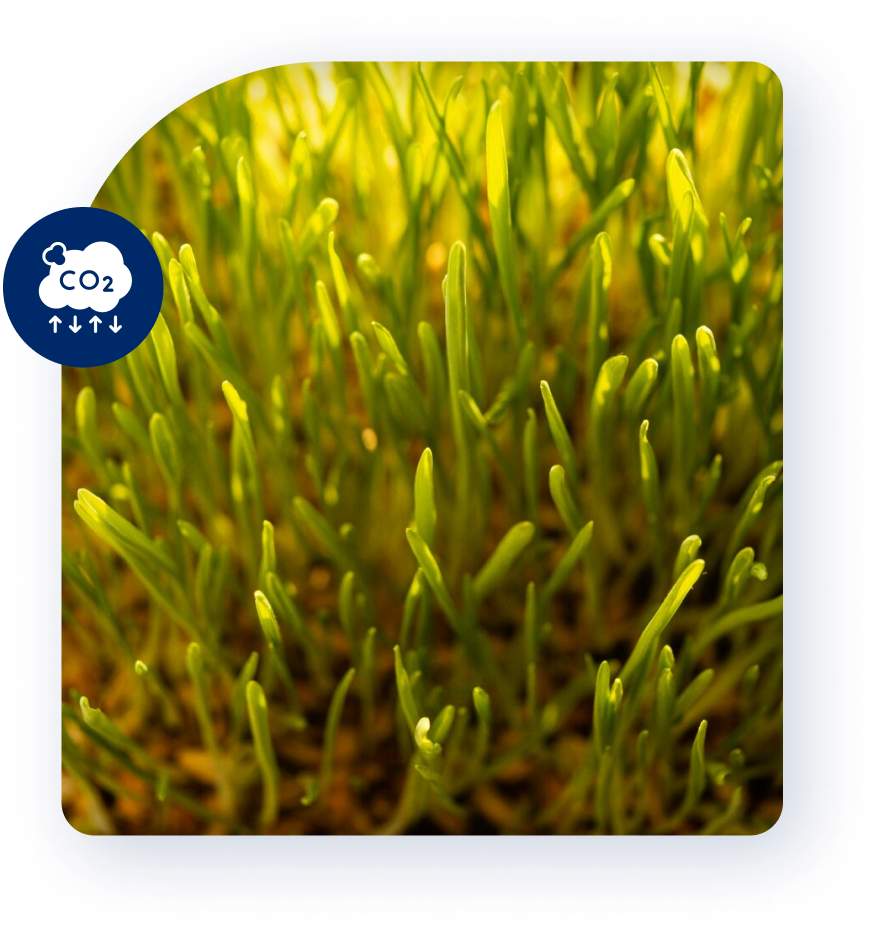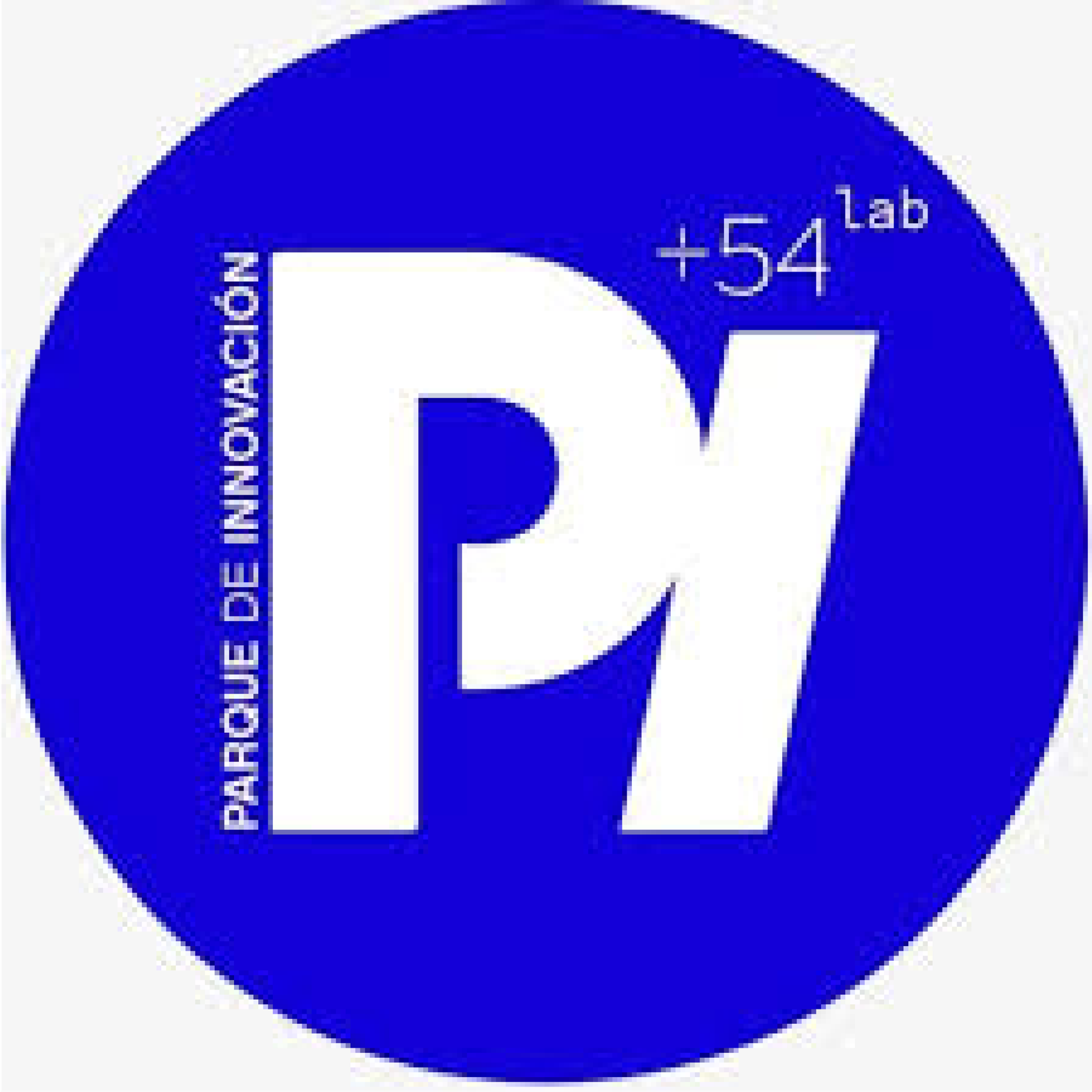Together
we can improve
productivity
and food
security in the face
of climate change.
Who are we?
At BEAM, our mission is to lead innovation in agriculture through the application of advanced photobiology and biotechnology.
Specializing in the identification and optimization of key genes that maximize crops’ growth, resilience, and yield, we provide cutting-edge genetic solutions to the world’s leading seed companies as a pioneering R&D firm. By equipping them with innovative technologies that enhance their seeds, we transform the agricultural industry and address current and future food security challenges, offering scalable solutions that benefit both companies and agricultural producers.


Revolutionizing Technology
At BEAM CropTech, we are revolutionizing agriculture with a technology that optimizes crop growth and yield sustainability, even in changing environmental conditions. PHOTOSYNTER, our technology, enhances photosynthesis by modifying a single gene which is conserved in all plants. This innovation has the potential for broad application in different crops, and so, enables the commercialization in multiple global markets.
Our technology
At BEAM CropTech, we develop technologies capable of optimizing growth and increasing crops’ yields under changing environmental conditions, intervening through genetic engineering on the mechanisms of plant perception and responses to light. We have projects at different stages of development, with PHOTOSYNTER being the most advanced. With PHOTOSYNTER, we are able to optimize the photosynthetic rate through genetic intervention on a single gene that is conserved in all plants. For this reason, PHOTOSYNTER has the potential to improve the broad-acre crops that have the greatest impact on feeding the growing global population.
We are establishing various strategic alliances to improve the genetics of several crops with PHOTOSYNTER.

Our achievements are getting bigger and bigger
Technology Impact:
Productivity and Sustainability
We increased productivity in agricultural fields.
Our seed genetics innovation sustainably increases crops’ productivity with maximizing agricultural fields. By optimizing genetic traits, we enhance crop yield, leading to bumper harvests. This avoids deforestation and promotes efficient use of resources, contributing to food security and environmental protection.


We increased resistance to water stress, benefiting crops in areas affected by climate change.
Our technology increases crop resistance to water stress, allowing for good yields even under water deficit conditions. Thanks to this innovation, farmers can better face the challenges posed by climate change. Additionally, our solution presents a viable alternative for reclaiming areas currently marginal for agriculture, transforming them into productive and sustainable regions. In this way, we contribute to agricultural resilience and promote the efficient use of water resources.
We capture more CO2 in agricultural environments, helping to reduce the carbon footprint
Our technology increases the photosynthesis rate in crops, capturing greater CO2 amounts compared to those that do not use it. This increase helps to reduce the carbon footprint and demonstrates our commitment to sustainable and environmentally friendly solutions. Additionally, by capturing more CO2, we welcome future opportunities in carbon markets, increasing our positive impact in the fight against climate change.

They are with us in every achievement
PARTNERS


Allies








Illuminating the path towards agricultural innovation.
Together, we can enhance agricultural productivity, face the challenges of climate change, and contribute to global food security.
Frequently Asked Questions
How does photobiology affect crop efficiency?
Plants’ photobiology studies how they respond to light as a signal and energy source. Light activates physiological processes such as growth and flowering, and is essential for photosynthesis, in which plants convert light energy into chemical energy. Proper management of the quality, quantity, and duration of light can optimize these processes and improve agricultural efficiency, but it is impossible to change light over thousands of cultivated acres. At BEAM, we address this challenge by discovering and optimizing light response genes. This allows crops to utilize light more efficiently, improving their yield and health, which, in turn, increases agricultural productivity.
How do we optimize gene function?
Currently, we are using two technical approaches in our projects: cisgenesis and gene editing. Cisgenesis is an advancement in the transgenic crops’ creation, as it optimizes the plant’s own genes, meaning those already present in its genome, without introducing genes from other species. On the other hand, in gene editing, we employ the CRISPR/Cas9 technique, which allows us to modify specific DNA areas of a species to develop genetically edited crops. This methodology offers regulatory advantages over traditional genetically modified organisms (GMOs), as it involves fewer regulatory complications and can facilitate their acceptance in the market.
Can I acquire BEAM’s developments if I am a producer?
Although our developments are specifically designed to address the challenges faced by producers and improve their profitability, BEAM’s technologies are transferred, in first place, only to companies that focus on enhancing the genetics of elite seeds and then hey are sold to producers. In the agro-industrial chain, we position ourselves as research and development providers for major seed companies.
What are the benefits under drought conditions?
Contact Us
You are welcome to contact us with any questions.
- +54lab Campos Salles 1300, C1429 Cdad. Autónoma de Buenos Aires, Argentina
- 1395 Brickell Ave Suite 800, Miami FL 33131

